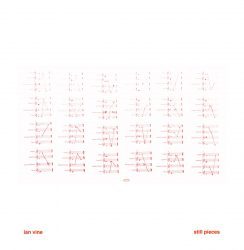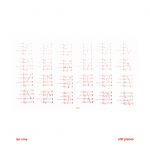TRIO RAMBERGET – MUSIK ATT SOMNA TILL 
Musik Att Somna Till best translates to Music to fall asleep to. So the intentions of Trio Ramberget for this album are very clear. A sleep music concept that is not unknown in ‘ambient’ music of course – but it is the setting of this trio that is unique.
A trio featuring a double bass (Johanna Eckholm), a trombone (Gustav Davidsson) and a bass clarinet (Pelle Westlin): yes, this is fully acoustic ‘sleep music’.
Musik Att Somna Till best translates to Music to fall asleep to. So the intentions of Trio Ramberget for this album are very clear. A sleep music concept that is not unknown in ‘ambient’ music of course – but it is the setting of this trio that is unique.
A trio featuring a double bass (Johanna Eckholm), a trombone (Gustav Davidsson) and a bass clarinet (Pelle Westlin): yes, this is fully acoustic ‘sleep music’.
Playing quiet unhurried sleep music on acoustic instruments is harder than using electronic instruments. Vvolk/Book Of Air takes this to the conceptual maximum (check them out if you haven’t), but Trio Rmberget chooses a different path to get the desired result. They don’t aim to play drones, but unhurried arrangements that border on slowed down jazz music .
Their second full album “is a step in a more minimalistic and ambient direction than our earlier releases” and aims to find a “common ground for people who enjoy jazz, ambient, minimalism, post-rock, modern classical music and so on. “
It only took me a few minutes to fall for their music. The sound of their instruments, the careful balance between jazz/classical and improvised music (all these tracks are freely improvised, but they sound as carefully thought-out compositions), but first and foremost the extremely relaxed atmosphere…
IAN VINE – STILL PIECES 
Many, if not most, drone pieces are created with electronic means. After all, it is quite difficult to maintain a long stretched note on most acoustic instruments.
This is why this release by Ian Vine immediately caught my attention:
“twenty-four pieces for flute(s), accordion, acoustic guitar(s), piano, electronics, which combine to form an hour-long work.”
Ian Vine is a composer from Manchester “who works with acoustic instruments and electronics in the concert hall as well as for installation and recorded media. His music is characterised by stillness and sustained sound, extreme economy and material revealed at a glacial pace.”
His website lists an enormous body of works since 1994. Gradually, the concept of his works evolve to explore endless combinations of similar object or events. Most of the works are described by their titles: Fifty Objects, Fourty Object, Over 5000 Individual Works, [2520] Individual Works For Violin, etcetera.
Still Pieces is meant to be hears as one single hour-long piece, with 24 shorter fragments played by an ensemble of flute(s), accordion, acoustic guitar(s), piano and electronics.
The pieces can be played in any order: “there are 620,448,401,733,239,439,360,000 permutations.” (I haven’t checked that, by the way).
I called it a drone, which is an proper description for each of the parts, but not for the whole piece: the parts slightly differ in tone, and each piece starts with a recognisable chord which is sustained throughout the rest of the fragment.
Playing this set in one continuous setting is bewitching enough, but it also reveals a conceptual flaw (at least to me): the fragments cannot be played seamlessly because of a fragment of a second of silence at the end. A seamless random play would be impossible on a CD-player by definition: the player would have to search for the next track and thus skip a moment. But most digital players are perfectly capable of playing random tracks seamlessly so in that case the skipping moment of silence somehow ruins the continuous listening experience – random and sequential.
This moment of silence between each part may of course be intended, I don’t know. But personally I prefer to hear this work without the gaps. So I set myself to work and chopped off the silences of each part, creating my own gapless version to enjoy.
So there may be a bit of work to do before you can really enjoy these pieces in gapless permutations, but it is definitely worth the effort.
Anyway: this is my first encounter with the work of Ian Vine, but – regarding his immensely interesting body of work – it’s definitely not my last!
Edit:
Ian has explained his decision to include the gaps between the pieces:
“There is meant to be a gap (it’s an eighth-note rest); I thought about this for ages…. and in the end that was my solution – I found the ’seamless gap’ to be too jarring – this feels like the quartet are taking a breath before playing the next piece.”





